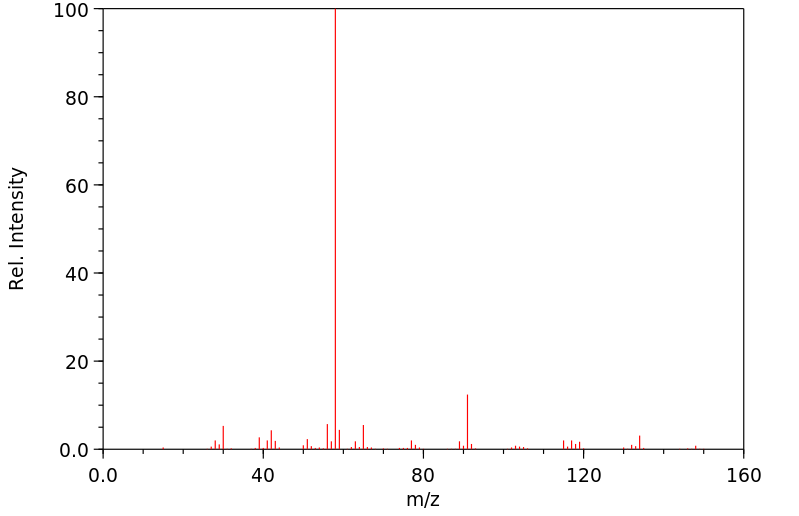毒理性
◉ 母乳喂养期间使用总结:由于缺乏将甲基苯丙胺作为治疗剂在哺乳期使用的已发表经验,可能更倾向于使用其他药物,特别是在哺乳新生儿或早产儿时。一位专家建议,不应在哺乳母亲中作为治疗剂使用安非他明。
甲基苯丙胺不应被哺乳母亲作为消遣性药物使用,因为它可能会影响她们的判断力和照顾孩子能力。在哺乳母亲滥用甲基苯丙胺后,甲基苯丙胺及其代谢物安非他明可以在母乳和婴儿血清中检测到。然而,由于在给哺乳母亲服用消遣性甲基苯丙胺方面存在伦理考量,这些数据来自随机收集而非控制研究。其他需要考虑的因素包括哺乳婴儿可能出现的阳性尿检,这可能具有法律影响,以及街头毒品可能含有其他有害杂质的可能性。通常不鼓励积极滥用安非他明的母亲进行哺乳。对于在哺乳期间滥用甲基苯丙胺的母亲,建议在最后一次使用后48到100小时不进行哺乳,尽管许多母亲在最后一次使用后平均72小时甲基苯丙胺在母乳中已检测不到。有人建议,在母亲安非他明尿检阴性24小时后,可以恢复哺乳。
◉ 对哺乳婴儿的影响:一名两个月大的婴儿,其母亲通过鼻腔吸入街头非法甲基苯丙胺进行消遣,哺乳和摄入120到180毫升配方奶后8小时被发现死亡。尸检时婴儿血清中甲基苯丙胺浓度为39微克/升。尽管婴儿的母亲因在哺乳期间使用甲基苯丙胺而被判定为危害儿童安全,但由于婴儿血清中甲基苯丙胺浓度较低以及母亲据称哺乳次数较少,甲基苯丙胺在婴儿死亡中的作用受到质疑。
南澳大利亚政府病理学家报告了一名与母亲同睡的哺乳婴儿的死亡。尸检时在婴儿体内发现了“显著”浓度的甲基苯丙胺,认为母乳中的药物可能是导致死亡的一个潜在因素。这些作者还报告说,在之前12个月以下婴儿的死亡案例中,检测到的甲基苯丙胺及其代谢物安非他明可能部分是通过母乳获得的。新西兰政府病理学家也确认了他们国家类似的发现。
◉ 对泌乳和母乳的影响:给6名受试者(4名男性和2名女性)单次口服0.2毫克/公斤,最多17.5毫克的d-甲基苯丙胺。在给药后300分钟内,血清催乳素浓度没有变化。
在两篇同一作者的文章中,研究了20名具有正常生理性高催乳素血症的妇女,时间为分娩后第2或第3天。其中8人静脉注射了7.5毫克右旋安非他明,6人注射了15毫克,6人作为对照组注射了静脉生理盐水。7.5毫克剂量使血清催乳素下降了25到32%,与对照组相比差异不显著。15毫克剂量在输液后一段时间显著降低了血清催乳素30到37%。没有提出对乳汁产量的评估。作者还引用了另一项研究的数据,显示20毫克口服剂量的右旋安非他明使产后妇女的血清催乳素持续下降了40%。
一项研究比较了31名甲基苯丙胺依赖受试者和23名非依赖受试者。甲基苯丙胺依赖受试者在戒断后第2天和第30天的血清催乳素浓度升高。这种升高在女性中比男性更明显。在已建立泌乳的母亲中,母体催乳素水平可能不会影响她的哺乳能力。
在一项回顾性澳大利亚研究中,与滥用其他药物的母亲相比,怀孕期间使用静脉安非他明的母亲在出院时更不可能在哺乳新生儿(27%对42%)。这种差异的原因尚未确定。
一项前瞻性、多中心研究跟踪了在产前使用甲基苯丙胺的母亲(n = 204)与未使用的母亲(n = 208)。与未暴露的婴儿相比,暴露于甲基苯丙胺的婴儿表现出吸吮力弱、过度吸吮和更多颤抖。使用甲基苯丙胺的母亲在出院时哺乳婴儿的可能性较低(38%),而不使用甲基苯丙胺的母亲哺乳婴儿的可能性较高(76%)。
◉ Summary of Use during Lactation:Because there is no published experience with methamphetamine as a therapeutic agent during breastfeeding, an alternate drug may be preferred, especially while nursing a newborn or preterm infant. One expert recommends that amphetamines not be used therapeutically in nursing mothers.
Methamphetamine should not be used as a recreational drug by nursing mothers because it may impair their judgment and childcare abilities. Methamphetamine and its metabolite, amphetamine, are detectable in breastmilk and infant's serum after abuse of methamphetamine by nursing mothers. However, these data are from random collections rather than controlled studies because of ethical considerations in administering recreational methamphetamine to nursing mothers. Other factors to consider are the possibility of positive urine tests in breastfed infants which might have legal implications, and the possibility of other harmful contaminants in street drugs. Breastfeeding is generally discouraged in mothers who are actively abusing amphetamines. In mothers who abuse methamphetamine while nursing, withholding breastfeeding for 48 to 100 hours after the maternal use been recommended, although in many mothers methamphetamine is undetectable in breastmilk after an average of 72 hours from the last use. It has been suggested that breastfeeding can be reinstated 24 hours after a negative maternal urine screen for amphetamines.
◉ Effects in Breastfed Infants:A 2-month-old infant whose mother used illicit street methamphetamine recreationally by nasal inhalation was found dead 8 hours after a small amount of breastfeeding and ingestion of 120 to 180 mL of formula. The infant's serum methamphetamine concentration on autopsy was 39 mcg/L. Although the infant's mother was convicted of child endangerment for the use of methamphetamine during breastfeeding, the role that methamphetamine played in the infant's death has been questioned because of the low infant serum methamphetamine concentration and the mother's alleged minimal breastfeeding.
South Australian government pathologists reported the death of a breastfed infant who was co-sleeping with its mother. Methamphetamine was found in a “significant” concentration in the infant on autopsy and the drug in breastmilk was thought to be potentially contributory to the death. These authors also reported that in prior deaths of infants under 12 months of age, detectable methamphetamine and its metabolite, amphetamine, may have been partially obtained via breastmilk. Pathologists from the New Zealand government confirmed similar findings in their country.
◉ Effects on Lactation and Breastmilk:A single oral dose of 0.2 mg/kg to a maximum of 17.5 mg of d-methamphetamine was given to 6 subjects (4 male and 2 female). Serum prolactin concentrations were unchanged over a period of 300 minutes after the dose.
In 2 papers by the same authors, 20 women with normal physiologic hyperprolactinemia were studied on days 2 or 3 postpartum. Eight received dextroamphetamine 7.5 mg intravenously, 6 received 15 mg intravenously and 6 who served as controls received intravenous saline. The 7.5 mg dose reduced serum prolactin by 25 to 32% compared to control, but the difference was not statistically significant. The 15 mg dose significantly decreased serum prolactin by 30 to 37% at times after the infusion. No assessment of milk production was presented. The authors also quoted data from another study showing that a 20 mg oral dose of dextroamphetamine produced a sustained suppression of serum prolactin by 40% in postpartum women.
A study compared 31 methamphetamine-dependent subject to 23 non-dependent subjects. The serum prolactin concentrations in the methamphetamine-dependent subjects were elevated at days 2 and 30 of abstinence. The elevation was greater in women than in men. The maternal prolactin level in a mother with established lactation may not affect her ability to breastfeed.
In a retrospective Australian study, mothers who used intravenous amphetamines during pregnancy were less likely to be breastfeeding their newborn infants at discharge than mothers who abused other drugs (27% vs 42%). The cause of this difference was not determined.
A prospective, multicenter study followed mothers who used methamphetamine prenatally (n = 204) to those who did not (n = 208). Infants exposed to methamphetamine exhibited poor suck, excessive suck and more jitteriness compared to nonexposed infants. Mothers who used methamphetamine were less likely to breastfeed their infants (38%) at hospital discharge than those who did not use methamphetamine (76%).
来源:Drugs and Lactation Database (LactMed)







